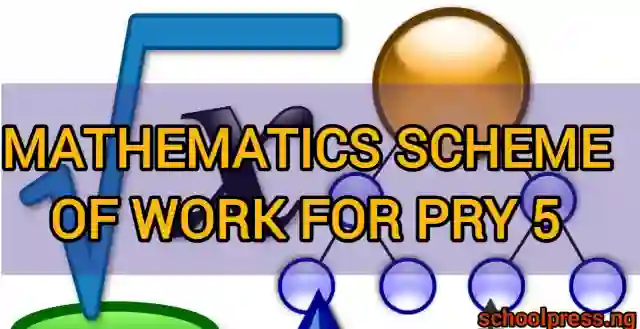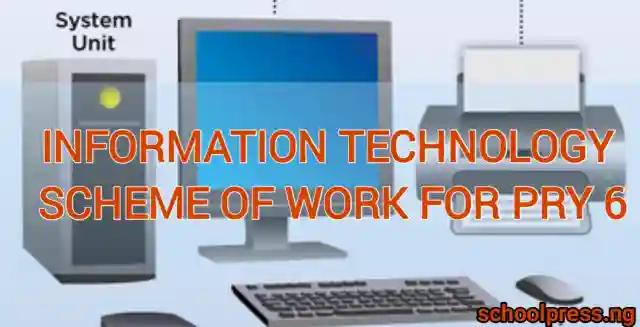Home Economics is a subject that is taught to enable individuals to run their homes and families effectively. The subject is important as it equips individuals with the necessary knowledge and skills that are required in doing various activities such as cooking, sewing, since cleaning and also how to manage resources. This essay is focusing on Home Economics Scheme of Work on Primary 5.
The Home Economics Scheme of Work for Primary 5 includes each term that has certain topics. For instance, within the first term, the students are required to be taught compound clearing, family functions, types of family, roles of family members, family tree, family life cycle, family values, and resources.
In the second term, the students should get information about the care of personal belongings, simple sewing tools and equipment, basic stitches, common articles made by sewing, knitting and crocheting, and cooking tools and equipment.
The third term includes instruction on food safety, cooking methods, and the preparation of simple meals by the use of different methods.
The Home Economics Scheme of Work for Primary 5 is a subject that encompasses a broad range of topics. It is meant to impart knowledge to children to assist them in managing their homes and families and their resources wisely. The subject is distributed over a period of three terms, each term encompassing distinct topics.
The topics covered on its first term include family functions and types of family, the roles of family members, family tree, family life cycle, family values and resources.
On the second term, the topic covered involves the care of personal belongings, simple sewing tools and equipment, basic stitches, common articles made by sewing, knitting and crocheting, and cooking tools and equipments.
In the third term, the topics covered include food safety, cooking methods, and preparation of foods using various methods.
Table of Contents
First Term Home Economics Scheme of Work for Primary 5
| WEEKS | TOPIC | CONTENT | |
| 1 | Compound clearing and Revision | ||
| 2 | Family functions, Relationships/Types of Family | i) Meaning of family ii) Types of family iii) Functions of the family | |
| 3 | Family functions; Roles of family members | 1) Roles of each family member e.g Roles of father Roles of Mother Roles of Children | |
| 4 | Family functions: Family Tree | i) Draw paternal family tree ii) Draw maternal family tree iii) Explain paternal and maternal parent | |
| 5 | Family functions: Family Life Cycles | 1) Definition of family life cycle 2) Different stages of family life cycle e.g (i) the beginning state (ii) the expanding family (iii) the contracting family | |
| 6 | Family functions; Family life cycle The beginning stages | i) List stages of family life cycle ii) Explain the beginning stage of family life cycle | |
| 7 | Family functions; Family life cycle The expanding stages | i) List stages of family life cycle ii) Explain the expanding stage of family life cycle | |
| 8 | Family functions; The contracting stage of Family life cycle | i) List stages of family life cycle ii) Explain the contracting stage of family life | |
| 9 | Family Functions: Family values | Meaning of family values 2) Types of family values | |
| 10 | Resources Types of Resources | 1) Meaning of resources 2) Types of resources e,g (i) Personal (ii) Family resources | |
| 11 | Resources | (i) Meaning of Personal Resources (ii) State examples of personal Resources | |
| 12 | REVISION AND EXAMINATION | ||
| 13 | MARKING AND RECORDING |
Check All Primary Schemes of Work Below
Second Term Home Economics Scheme of Work for Primary 5
| WEEKS | TOPIC | CONTENT | |
| 1 | Compound clearing and Revision | ||
| 2 | Resources | 1. Meaning of family resources. 2. State examples of family resources e.g. Money, house, properties, etc. | |
| 3 | Uses of personal and family resources | 1. Uses of personal resources. 2. Uses of family resources. | |
| 4 | Guide lines for care of personal belongings | i) State guide lines for the care of personal belongings. ii) List materials used for personal belongings. | |
| 5 | Care of personal belongings. | Care for personal belongings. | |
| 6 | Simple sewing tools and equipment | 1. Simple sewing tools 2. Different types of sewing tools and equipment. | |
| 7 | Uses and cares of simple sewing, knitting and crocheting tools. | 1. Uses of sewing, knitting and crocheting tools. 2. List cares to be given to simple sewing, knitting and crocheting tools. | |
| 8 | Basic Stitches | 1. Define basic stiches. 2. State types of basic stitches e.g. i) Temporary stiches ii) Permanent “ 3. List examples of basic stitches. | |
| 9 | Common articles made by sewing, knitting and crocheting | 1. List common articles by: i) Sewing ii) Knitting iii) Crocheting e.g. arm rest, head – rest, tray cover, head band etc. 2. Care given to common articles made | |
| 10 | Cooking tools and equipment. | i) Identify tools and equipment for cooking. ii) List various examples of cooking tools and equipment. | |
| 11 | Uses of cooking tools and equipment. | i) List various cooking tools and equipment. ii) State uses of cooking tools and equipment. | |
| 12 | REVISION AND EXAMINATION | ||
| 13 | MARKING AND RECORDING. |
Check All Jss Scheme Of Work Bellow
Third Term Home Economics Scheme of Work for Primary 5
| WEEKS | TOPIC | CONTENT | |
| 1 | Revision and compound cleaning | ||
| 2 | Cooking tools and equipment: Guide lines for cooking tools and equipment. | 1. List cooking tools 2. List cooking utensils. 3. State guide lines for use of cooking tools and equipment. | |
| 3 | Cleaning agents for cooking tools | 1) List cleaning agents for cooking tools and Equipment 2) State care of different materials used for making cooking equipment and utensils | |
| 4 | Cooking tools and Equipment Cleaning Cooking tools and Equipment | 1) List cleaning agents for cooking tools and Equipment e.g Scouring powder Soap, Sponge etc 2) Describe how to clean different tools and equipment | |
| 5 | Cooking tools and Equipment: Demonstration on the use and care of each tools and equipment | 1) Cleaning cooking tools and equipment 2) Demonstration on the use and care of each tools and equipment | |
| 6 | Food safety and cooking methods | 1) Define food 2) Define food safety | |
| 7 | Food safety and Cooking methods | 1) State Risk factors in raw food item contamination: i) Biological ii) Fungi iii) Chemical iv) Physical 2) State examples of objects that can contaminate raw food e.g (i) biological – mold, fungi (ii) chemical: pesticide, toxin etc (iii) physical: stone, metal, rust etc | |
| 8 | Food safety and cooking methods: Meaning and reason for cooking food | i) Define food ii) State reasons for cooking food | |
| 9 | Food : Cooking methods | 1) State different cooking methods e.g (i) boiling (ii) steaming (iii) Stewing (iv) Frying (v) Roasting (vi) Grilling (vii) baking 2) Give examples of food that can be cooked with different cooking method | |
| 10 | Food safety and cooking methods: Advantages and disadvantages of each cooking method | 1) State advantages of each cooking methods 2) List disadvantages of each cooking methods | |
| 11 | Food safety and cooking methods, Preparation of simple meals using different methods | 1) List all the materials used for preparing a particular meal to be prepared e.g frying of Akara ball: Beans, Onion, Groundnut oil, | |
| 12 | Revision and Examination | ||
| 13 | Marking and Recording |
Check All SSS Scheme Of Work Bellow
Conclusion
Home Economics Scheme of Work for Primary 5 is one of the most vital subject that every child should undertake. The subject is very necessary since it prepares children on how to manage their homes, families, and how to utilize the scarce resources.
The subject has many units and sub-units such as family functions, types of family, roles of family members, family tree, family life cycle, family values, resources, care of personal belongings, simple sewing tools and equipment, basic stitches, common article s made by sewing, knitting and crocheting, cooking tools and equipment, food safety, cooking methods, preparation of simple meals using different methods etc.









